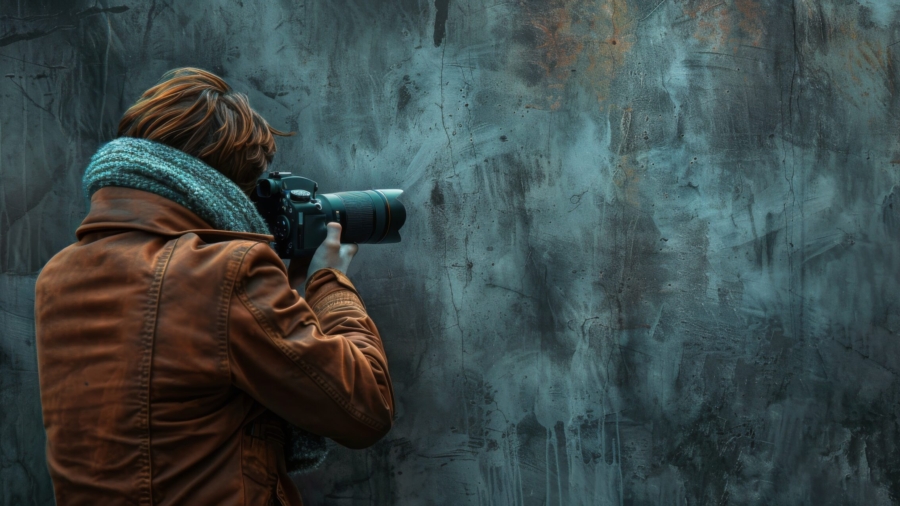The Rule of Thirds is one of the most fundamental principles in photography, often serving as the cornerstone for creating visually compelling images. Whether you’re a novice or an experienced photographer, understanding and applying the Rule of Thirds can elevate your work to new heights. In this comprehensive guide, we’ll explore the intricacies of this technique, how to implement it, and its impact on your photography.
Table of Contents
What is the Rule of Thirds?
The Rule of Thirds is a composition technique that divides an image into nine equal parts using two horizontal and two vertical lines. By positioning the key elements of your scene along these lines or at their intersections, you create a more balanced and engaging composition. This method helps direct the viewer’s eye through the photograph, enhancing the overall visual experience.
Why Use the Rule of Thirds?
Using the Rule of Thirds introduces structure and harmony into your photos. It helps in:
- Creating Balance: Placing the main subject off-center avoids a static feel, making the image more dynamic.
- Guiding the Viewer’s Eye: The intersecting lines naturally draw attention to key areas of the photo.
- Enhancing Interest: Off-center compositions are often more intriguing and pleasing to the eye.
How to Apply the Rule of Thirds
Step-by-Step Guide
- Enable the Grid: Most cameras and smartphones have an option to display a grid overlay on the screen. Enable this feature to see the Rule of Thirds grid.
- Align Key Elements: Position important subjects (like eyes in a portrait, the horizon in a landscape) along the grid lines or at their intersections.
- Adjust Your Frame: Move your camera or adjust your zoom to ensure the subject aligns correctly with the grid.
- Practice and Review: Take multiple shots and review them to see how the Rule of Thirds affects the composition.
Practical Examples
- Portrait Photography: Place the subject’s eyes along the top horizontal line, aligning them with one of the vertical lines for a balanced and engaging portrait.
- Landscape Photography: Position the horizon along the top or bottom third of the frame instead of the center. Place points of interest (like trees or buildings) at the intersections of the lines.
- Wildlife Photography: Capture animals in action by positioning them along one of the vertical lines, leaving space in front of them to move into.
The Rule of Thirds in Post-Processing
Sometimes, it’s not possible to frame your shot perfectly while shooting. This is where post-processing tools like Adobe Lightroom or Photoshop come into play. These programs allow you to crop and adjust your images to better adhere to the Rule of Thirds.
Cropping for Composition
- Open your image in your preferred editing software.
- Use the crop tool and enable the Rule of Thirds grid overlay.
- Adjust the crop to align key elements of your photo with the grid lines or intersections.
- Apply the crop and fine-tune any other adjustments as needed.
Breaking the Rule of Thirds
While the Rule of Thirds is a valuable guideline, there are times when breaking it can create striking images. Understanding when to deviate comes with experience and a deep understanding of composition principles. Sometimes, centering your subject or using a different compositional technique can produce a more powerful image.
When to Break the Rule
- Symmetry: When your scene has strong symmetrical elements, centering the subject can enhance the visual impact.
- Minimalism: In minimalist compositions, placing the subject in the center can create a strong focal point.
- Creative Expression: Artistic photography often involves breaking traditional rules to convey a unique vision or emotion.
FAQs
1. Is the Rule of Thirds applicable to all types of photography?
Yes, the Rule of Thirds can be applied to almost any type of photography, including portraits, landscapes, wildlife, and street photography. It is a versatile guideline that enhances composition across various genres.
2. Can the Rule of Thirds be used in videography?
Absolutely. The Rule of Thirds is widely used in videography to create balanced and aesthetically pleasing frames. It helps in guiding the viewer’s focus and maintaining visual interest in videos.
3. Do professional photographers always use the Rule of Thirds?
While many professional photographers frequently use the Rule of Thirds, they also know when to break it. Mastery of photographic composition involves knowing when to adhere to guidelines and when to experiment with different techniques.
4. How can I practice the Rule of Thirds?
To practice, start by enabling the grid overlay on your camera or smartphone. Take various shots with different subjects, aligning them according to the Rule of Thirds. Review your images to see the effect and adjust as needed. Regular practice will help you intuitively apply the rule.
5. What are other composition techniques besides the Rule of Thirds?
Other popular composition techniques include leading lines, framing, symmetry, patterns, and the golden ratio. Each technique offers unique ways to enhance the visual impact of your photos.
Conclusion
Mastering the Rule of Thirds is an essential step for any photographer looking to improve their composition skills. By understanding and applying this fundamental principle, you can create more balanced, engaging, and visually appealing photographs. Remember, while the Rule of Thirds is a powerful tool, don’t be afraid to break it occasionally to explore your creative potential. Happy shooting!


Add a Comment